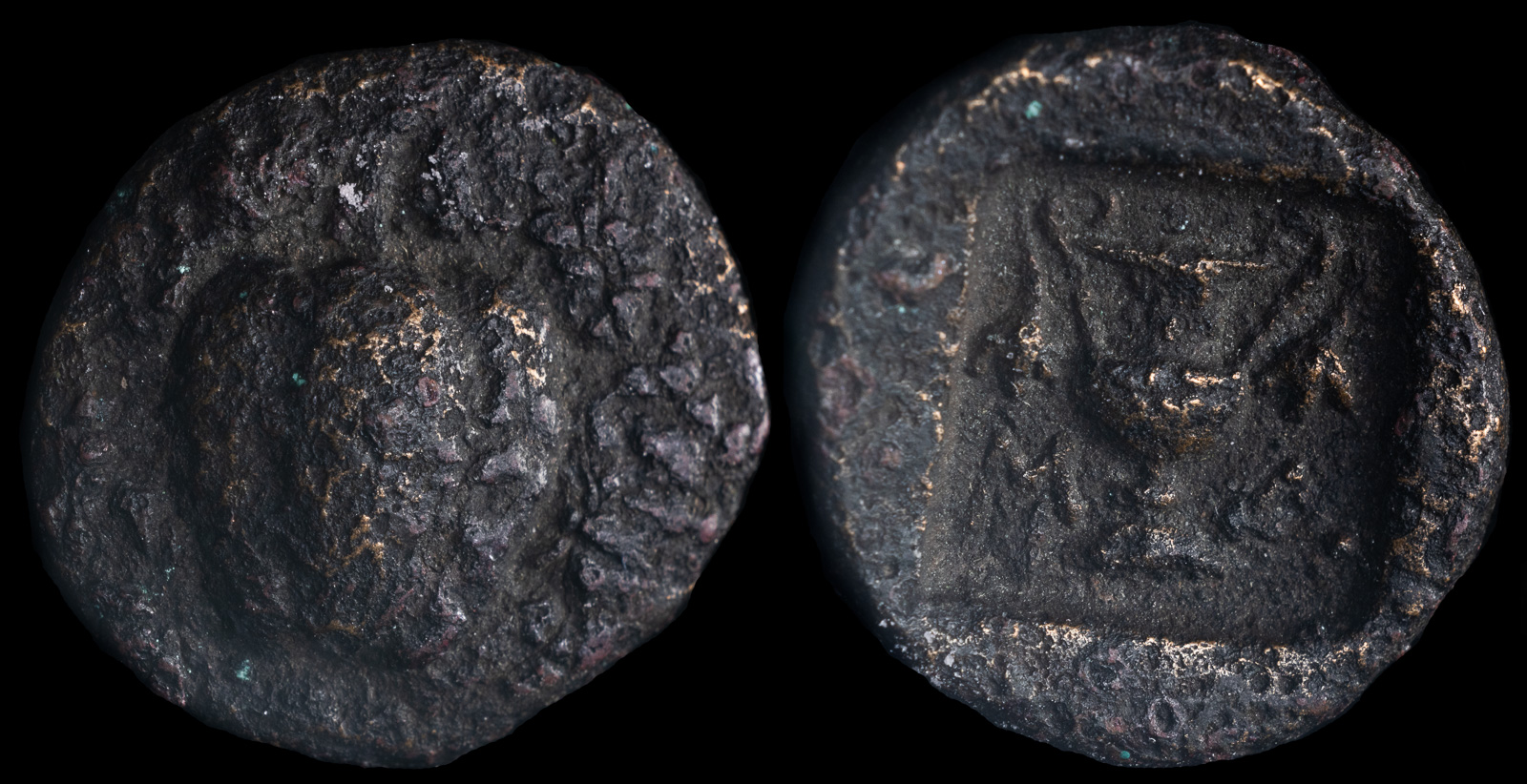
3rd-1st century BCE
Æ 17mm, 4.04 g, 6h
Apple /
Kantharos; grape bunches flanking; all within incuse square.
SNG Copenhagen 683; HGC 6, 835
The island became world famous when a farmer was digging on the acropolis and came across an interesting statue. It was not long after purchased by Louis XVII and placed in the Louvre.
Today, she’s a world-famous celebrity photographed by millions of tourists. I was one of them.

Just slightly less known than the Venus de Milo is my coin, which is also from Melos.
Debated is the obverse. While most attribute it to a pomegranate and Svoronos stated it was a quince, I have to ask why it’s not an apple. After all, the island is called Μήλος, while the Greek word for ‘apple’ is ‘μήλο’. It does look a bit odd for an apple, but it’s equally odd as a pomegranate. I have a quince tree in my backyard and it doesn’t really resemble that either, but then my tree produces very weird quinces. I suppose upon further research that it’s not an apple, but it certainly seems odd to call your island ‘apple’ and then put a pomegranate or quince on your coins.
According to Plutarch, Melos was the source of a white color, called Melian white, used in antiquity.
Milos was the site of a horrible action by Athens in 417-416 BCE. Since the island had sided with Sparta, Athens attempted to coerce the island into joining them. When that failed, they besieged the island, conquered it, then killed every man and sold the women and children into slavery. The butchery was despised in Athens itself and Euripides’ play The Trojan Women was influenced by it (though not based on the events).
Athens then resettled Melos, but in 405 BCE the Spartan general Lysander resettled the island from the remains of the original inhabitants.
I was not able to find a decent source online about the history of Melos’ coinage. There was a major hoard found in 1907, consisting of 79 coins minted in the 5th century BCE. It consisted of an amazing 31 different types and is believed to have been buried by someone in Melos shortly before Athens’ destruction of its cities. Those issues were silver and mine came much later. That being said, my coin was likely extant when the Venus de Milo was being carved, so it’s possible that the sculptor used my coin to buy a beer.
From what I can tell, this is the only example of the type sold at auction, though it’s published so there must be others in museums. The types of Melos are varied and I wonder if they changed designs often.